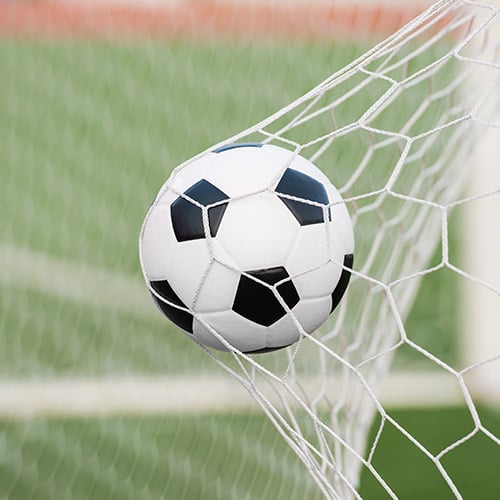Here at InnerDrive HQ, we are always on the look out for research papers that offer insights into how cognitive psychology can be and is being used in sport. Recently, we came across an interesting paper that looks at this.
So, what areas of cognitive psychology does the paper explore and what are its implications on your coaching?
Cognitive Load Theory
As a coach, it is important to consider how your coaching methods can impact your athletes’ cognitive load. Cognitive load refers to the amount of information the working memory can hold at one time. But the thing is, the capacity of our working memory is limited. Presenting your athletes with too much information it can overload them, hindering their learning. As a result, less information may be successfully transferred into their long-term memory, and they may struggle to learn new skills.
There are different forms of cognitive load:
- Intrinsic load – This refers to the cognitive load of the necessary information or motions being learned. This can be influenced by prior knowledge of the topic.
- Extraneous load – This refers to unnecessary information, extraneous to learning goals. This type of load is most often the result of a coach’s learning design.
For more on cognitive load and its implications on practice, check out this blog.
Desirable difficulty
To generate long-term learning for your athletes, you may think the solution would be to remove any extraneous load. Now, whilst this can improve your athletes’ learning, it isn’t the only way. By challenging your athletes, you can enhance their knowledge. This is where desirable difficulty comes into play.
Desirable difficulty refers to introducing manageable challenges into your athletes’ learning environment. These challenges may require a considerable amount of effort to overcome, which helps to improve long-term performance. But for your athletes to have the desire to complete these challenges, they must have the knowledge and skills to do so. If they do not, the task will become undesirable and they will no longer want to complete it.
Experts vs. novices
To understand what your athletes will find desirably difficult, you must know the stage of learning your athlete is at. According to research, there are three stages of learning:
- The cognitive stage
This is the beginner stage, where athletes are often referred to as “novices”. At the cognitive stage performances are inconsistent and jerky, with athletes making frequent errors and relying on their coaches for cues. They struggle to use internal feedback and often need their coach’s feedback to correct and improve their performance. Because athletes at this stage are still learning the movements, performing requires the athlete’s full attention. Novices usually need demonstrations or visual examples to help give them a better grasp of the skill.
- The associative stage
This stage is also known as the practice phase. Athletes become more aware of their errors because they have a better understanding of what the correct movement feels like. Their mistakes are no longer major and their movement starts to look more fluent and less jerky. Although this stage of learning is a big improvement from the cognitive stage, it also tends to be the longest of the three.
- The autonomous stage
In this final stage, learners are often referred to as “experts” or “elite”. At this stage skills have become automatic and therefore require little thought. These athletes have good internal feedback and can detect errors and correct them themselves without the help of a coach. Movement at this stage is fluent and controlled, and athletes can recall information better. Experts also tend to take more information in from cues and can overall make decisions quicker.
Fidelity of practice
Fidelity of practice is essentially trying to make your practice and training sessions reflect actual competition environments. The practice tasks that you present to your athletes need to represent real opportunities that could arise in matches or competitions. This helps emphasise the need for individual athletes to explore their performance environment.
Two types of fidelity are:
- Physical fidelity – Enhancing game form practice and increasing performers’ skill automaticity in different situations by simulating realistic performance environments. Whilst it’s good to begin coaching with some form of realistic competition, you can lower the levels of fidelity when working with a clear understanding of ideas.
- Psychological fidelity – Activating athletes’ psychological processes by reflecting the mental and emotional demands of a competition in your training environment. A greater similarity between training and performance actions helps to trigger the athlete’s retrieval of mental representation and images. This increases the likelihood of performance transfer from practice to competition.
5 tips to improve coaching methods
So, now you know the factors covered in the paper and how they could reduce learning and understanding, here are a few tips to ensure they don’t affect your athletes…
- Test the prior knowledge of your athletes – This allows you to identify the requirements of your athletes so you can consider the content they need to learn.
- Assess what stage of learning your athletes are at – Having knowledge of your athletes’ learning stage can give you an indication of how difficult you should make tasks, so training is still desirable for your athletes.
- Track your athletes learning over time – As your athletes’ knowledge and understanding increases, guidance should be removed to increase your athletes’ problem-solving skills and internal feedback.
- Identify what coaching practices should be used to minimise extraneous load – Being clear and concise with instructions or feedback will help your athletes remember the important parts of the information you’re presenting and reduce extraneous load.
- Adapt coaching methods to suit your athletes – Coaching methods that are effective with novices can be ineffective with experts and vice versa. Coaches need to be aware that not all methods will suit all.
How to adapt your coaching for different stages of learning
The paper has a great section in the implications about how you should consider coaching athletes at different stages of learning and development, as mentioned in our fifth tip above. Generally, your type of coaching practice should be based on your athletes learning experience.
When it comes to coaching novice athletes, a direct approach may be more appropriate. For example, isolated practice alongside instruction can allow for early correction of error, helping to promote intrinsic load and aid learning.
Athletes at an intermediate or associative level may benefit from worked examples such as demonstrations to enhance their learning and further their understanding. It may also be beneficial for these athletes to have a more random schedule of practice, encouraging them to retrieve and organise the required actions on each task.
Athletes at the autonomous stage of learning may benefit from guided discovery. This is a form of problem solving where coaches raise questions to their athletes and provide different options or choices to help guide them to the correct answer. This has been shown to increase athletes’ game intelligence, as they are more likely to remember things that they have discovered themselves.
Final Thoughts
No two athletes are the same, so it makes sense that how to coach them effectively would vary. This is why it’s important for coaches to understand the cognitive psychology behind how athletes learn. With that knowledge, you can adapt your methods of teaching to enhance your athletes’ understanding and improve their performance.





